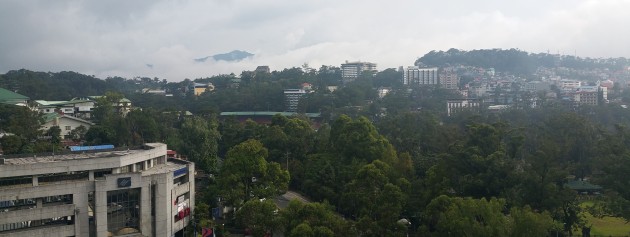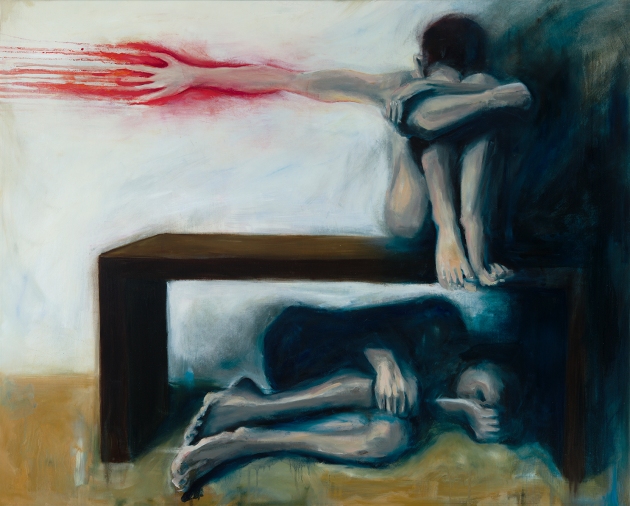“There are lost wavelengths and Atlantic sensations, ways of thinking and feeling that are conditioned by long term living on the Ocean’s edge – events of the mind that could only occur on the coasts”
Robert Macfarlane The Old Ways
Macfarlane writes about “events of the mind” that can only occur on the coast, in the edge and transitional spaces between land and ocean. Place has a significant impact on what events of the mind (and heart and soul) are possible. Place has the potential to beckon out from within us aspects of our deep self that may otherwise have been hidden, perhaps for our whole lives. Our being and our knowing are intrinsically bound to where we are standing and there are times when I travel somewhere new with the sense that the place has a gift for me.
So, it was that I found myself 7,000 miles from home on a bus winding its way up the mountain slopes of the northern territories of the Philippines. There are many stories to tell about that journey and that place held many gifts for me, some of them weren’t easy to receive, but this is where I discovered the word temenos. You may already know of it, you could have found it in a book or stumbled upon it online but as it happened I had to travel a third of the way around the world to discover it.

My hosts had taken me to a shopping mall In Baguio, a city in the mountains, where clouds roll in and engulf you as you drink coffee on a café terrace. In some ways familiar to me in the way that city malls around the world resemble each other but in so many other ways there were a million little sights entirely alien to my comfortable frames of reference such as the tropical butterfly alighting on the escalator or food stands mixing up sweet tofu. Only a few days into my stay I was still reeling from jet lag, humidity and the disconcerting culture shock that comes from the realisation that billions of people across the world live in ways that are entirely outside of my own limited realms of experience. It’s a realisation that, whilst self evident in many ways, only really hits home through encounter with the other.
We wandered through a large bookstore, the type that sells office supplies and cheap art materials alongside piles of books. Whilst my friends browsed, my eyes drifted over the shelves, not expecting to find anything to pique my interest but in the midst of that strange daze and sense of dislocation I saw a familiar name. A book by the artist Keri Smith called “The Wander Society”. I’d read some of her work before, it is charming, quirky and enthusiastic about enabling people to engage deeply and creatively with the world around us. Seizing on the familiar in an unfamiliar place I paid the Pesos and took it with me.
And here is the uncanny thing about finding this wonderful little book at the edge of my world: Smith unfolds ideas about the importance of wandering in places both strange and mundane. She explores the richness of the impact of place on our being, our doing and our creating, in fact, she describes exactly why it was that I travelled to the Philippines in the first place. So far from home, in the corner of a bookshop in a Philippine shopping mall I had wandered into a text that enlightened my wandering.
I don’t know whether it was coincidence or something else but really the distinction is irrelevant. These moments of synchronicity enable us to fold meaning into our lives. In my experience, the more I live with a creative heart that is open to risk and possibility the more these synchronicities occur. Living with our eyes open and our hands outstretched enables us to receive the gifts that we stumble upon. Furthermore, whether coincidence or not, I find it is invariably true that when we follow the pathways that these moments of grace open up then they lead to fruitful ground, rich in creative potential. For me this is a statement of faith: There is a kindness and a generosity in the universe that we will find if we choose to live with our eyes open.
John O’Donohue encourages this in his book ‘Eternal Echoes’:
“The very nature of the universe invites you to journey and discover it. The earth wants our minds to listen attentively and gaze wisely so that we may learn its secrets and name them. We are the echo-mirrors of contemplative nature. One of our most sacred duties is to be open and faithful to the subtle voices of the universe which come alive in our longing”
Tucked away in the pages of Smith’s book was a page outlining the concept of temenos: A sacred space or grove set aside for the gods, a special place that enables the exploration of different ways of being in the world.
Discovering the idea of temenos was the discovery of a name for something I had been working on for the previous few months, a series of 10 paintings that are thresholds into sacred space. They each form a gateway into the sacred grove that the word encapsulates. In addition the poet Ian Adams has written a piece to accompany each picture. The paintings overlay image, colour and gesture and the poems weave words that open up spaces and invite each viewer to bring their personal stories and experiences as we move into the temenos.
Over the next few weeks I will be posting the images here with reflections about their creation along with some of the stories of gift that I encountered in the Phillipines.
Deep in the belly / unseen, new life stirs, seeding / flowers into spring.
Ian Adams

The full set of paintings and poems are available to exhibit from September 2017. We are now taking bookings from those interested in showing the work in a public venue and simply ask that transport costs are covered. In addition an artist’s talk, poetry evening and/or led meditations that engage with the work can also be arranged.
For more information contact rjstott@hotmail.co.uk










